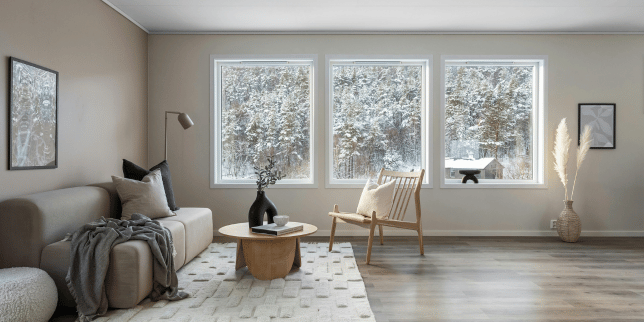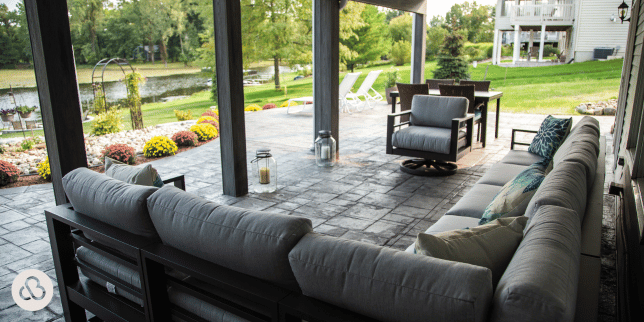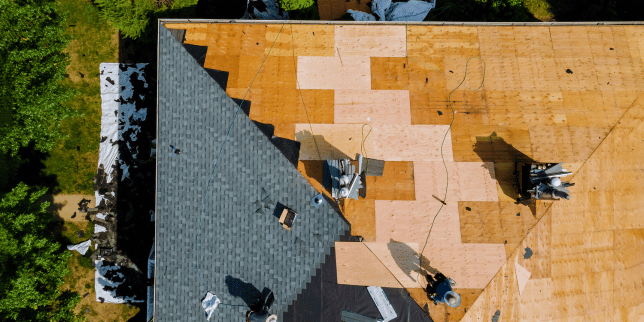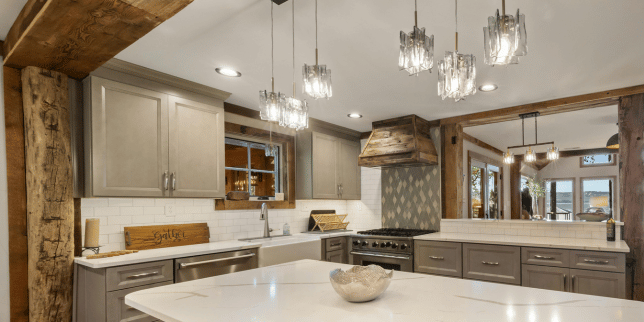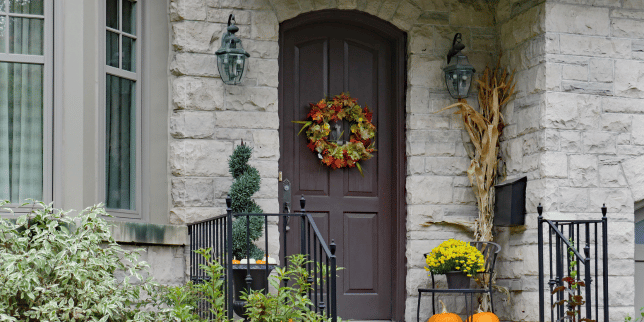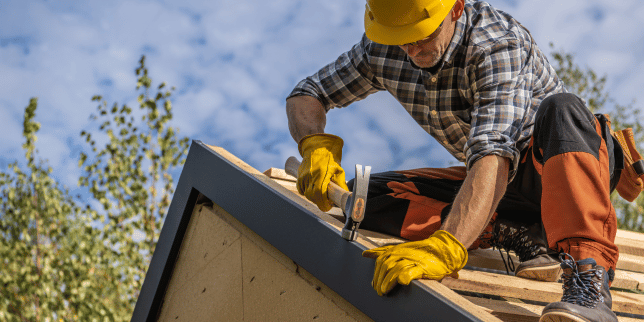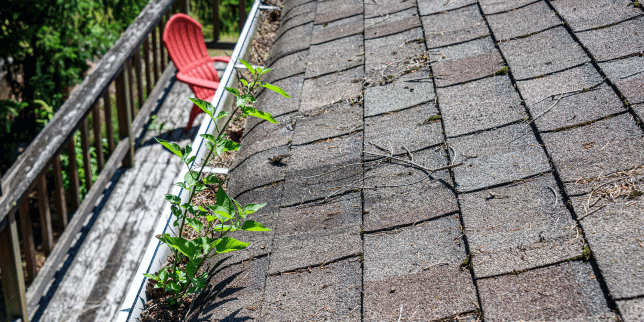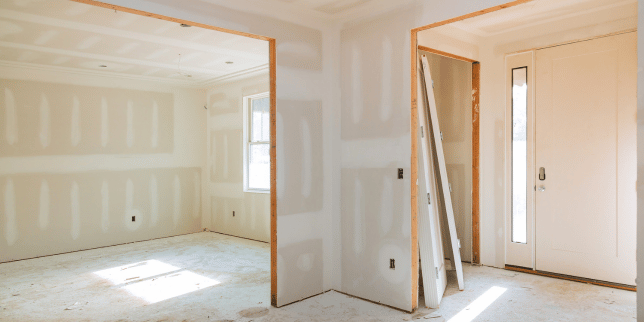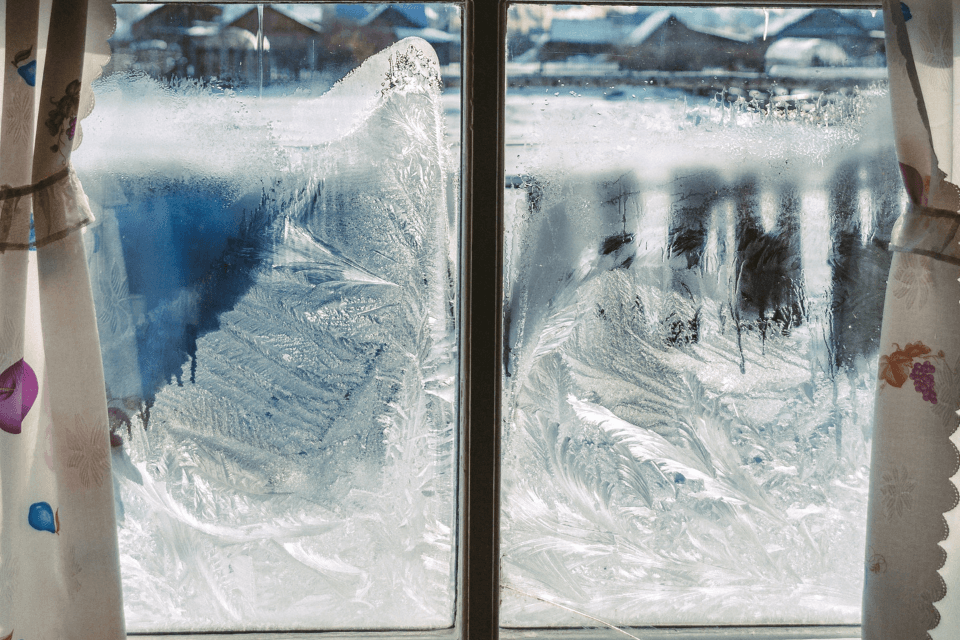
As a homeowner, you may have noticed frost forming on your windows during the winter months. This may raise questions and concerns about the condition of your windows and the overall comfort and efficiency of your home.
Understanding whether frost is a harmless phenomenon or a warning sign of more significant issues is crucial for maintaining a safe and well-functioning environment.
At Custom Built, we have encountered numerous cases of frost on windows throughout our 15+ years of remodeling experience. With our expertise in window installation and maintenance, we have gained valuable insights into the causes and implications of frost on windows in the winter.
In this article, we will go into the various factors that contribute to frost formation on windows during winter, when it is considered a bad sign, and how to address it:
4 Factors Influencing Frost Formation
Various factors influence frost formation on windows during the winter months. By examining these factors, homeowners can gain insights into the causes of frost on their windows and make informed decisions to mitigate any related problems.
In this section, we will explore the following components that contribute to frost formation:
- Ventilation
- Window Quality
- Window Insulation
- Temperature and Humidity
1. Ventilation
Proper ventilation is essential for maintaining balanced humidity levels inside the house. Inadequate ventilation can trap moisture indoors, leading to higher humidity levels and increased window frost formation. Proper airflow and ventilation help reduce excess moisture, minimizing the chances of frost buildup.
2. Window Quality
The quality and design of windows also affect the likelihood of frost formation. Windows with inadequate sealing or single-pane glass are more susceptible to frost buildup.
Inadequately sealed and older single-pane glass are more susceptible to frost due to their lack of proper insulation, allowing cold air to penetrate and moisture to accumulate, leading to frost formation.
On the other hand, properly insulated and double-glazed windows provide better thermal protection and are less prone to frost formation.
3. Window Insulation
The insulation around windows plays a crucial role in preventing cold air from seeping into the house. Poorly insulated windows allow cold air to penetrate, leading to a higher chance of frost buildup. Inadequate insulation can also result in condensation on the interior surface of the windows, which can contribute to frost formation.
4. Temperature and Humidity
Frost forms when the temperature drops below freezing point, and sufficient moisture is in the air. As the cold air chills, the moisture on windows crystallizes and turns into frost. The humidity level in the surrounding environment plays a significant role in determining the likelihood and extent of frost formation.
This humidity can be caused by any number of reasons, ranging from cooking to pets - all of which contribute to the moisture in the air.
When Frost on Your Windows is a Bad Sign
While a light dusting of frost on windows during winter is a common occurrence, there are situations where frost can indicate underlying issues that need attention. These issues could indicate poor insulation, ventilation problems, moisture infiltration, or inadequate window quality.
Recognizing these signs can prompt homeowners to take necessary steps to address the root causes and ensure a comfortable and efficient home environment:
- Ice Buildup
- Condensation Issues
- Frost Inside the Home
- Excessive and Persistent Frost
1. Ice Buildup
When frost transforms into ice, creating icicles or frozen patches on your windows, it suggests that moisture is infiltrating the window frames. This is concerning as it may lead to structural damage and compromised window integrity if not addressed promptly.
2. Condensation Issues
Significant condensation forming on the interior surface of your windows, in addition to frost on the exterior, indicates an imbalance in indoor humidity levels or inadequate ventilation. Excessive condensation can create a favorable environment for mold growth and also contribute to window damage over time.
3. Frost Inside the Home
Frost forming on the interior side of windows is a clear sign of cold air infiltration and poor insulation. This can result in uncomfortable indoor temperatures, drafts, and increased heating costs. It is crucial to address this issue to maintain a comfortable and energy-efficient living environment.
4. Excessive and Persistent Frost
If you consistently observe thick layers of frost accumulating on your windows and it does not dissipate even after the temperature rises, it is a clear indication of poor insulation or ventilation issues. This can result in energy inefficiency, discomfort, and damage to the windows.
Addressing Frost Issues in Your Home
If you notice frost-related problems with your windows during winter, it's important to take action to resolve them. Fortunately, there are several steps you can take to address frost-related issues and improve the comfort and efficiency of your home.
Let's explore these solutions in more detail to help you tackle frost issues head-on:
1. Improve Insulation
Enhancing the insulation around your windows is key to preventing cold air infiltration and reducing the likelihood of frost formation. This can be achieved by using weatherstripping to seal gaps, applying caulking to seal cracks, and considering the addition of insulating window film to provide an extra layer of thermal protection.
2. Enhance Ventilation
Ensuring proper ventilation throughout your home is essential for controlling indoor humidity levels and reducing the chances of frost formation. Use exhaust fans in areas with high moisture levels, such as kitchens and bathrooms, to remove excess humidity. Opening windows periodically to allow fresh air circulation will also help maintain balanced humidity levels.
3. Consider Window Upgrades
If you have single-pane windows or windows with inadequate insulation, upgrading to double-glazed or energy-efficient windows can significantly improve insulation and reduce the chances of frost buildup. These windows are designed to provide better thermal performance and minimize heat transfer.
4. Seek Professional Assistance
If you’re unsure of the cause of your window frost, it is advisable to consult a professional. They have the expertise to assess your windows, identify any underlying problems, and recommend appropriate solutions tailored to your situation. Professional assistance ensures the issues are addressed effectively and helps you maintain a comfortable and well-protected home environment.
Next steps to preventing window frost
If you have noticed frost on your windows during the winter months, it's essential to address any underlying issues promptly. While frost itself may not always be a cause for alarm, it can be an indication of problems that require attention.
By understanding the potential risks and knowing when to take action, you can ensure the comfort, efficiency, and longevity of your home.
As a trusted provider in the home improvement industry for the past 15+ years, Custom Built has been assisting homeowners in navigating various challenges related to their homes. We understand the importance of maintaining a comfortable and well-functioning living space, and our expertise in window solutions can help you address any concerns regarding frost formation.
In this article, we have explored the factors influencing frost formation, identified signs when frost on windows is a bad sign, and discussed effective ways to address frost issues.
For more information on how to identify and resolve other problems within your home and the best remodels for the winter, we recommend the following articles:
Aaron has been in the building industry his entire life. He worked in his family’s housing business growing up in Dewitt, MI, and for nearly 40 years, built homes in the Mid-Michigan area. He has also worked with the Greater Lansing Home Builder’s Association since he was 18 years old.
Topics:


















